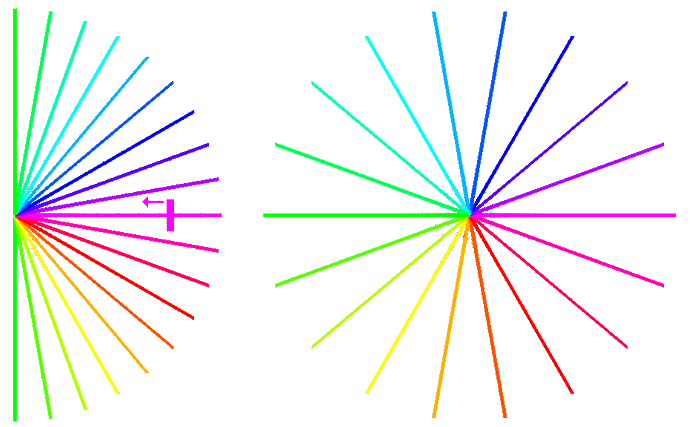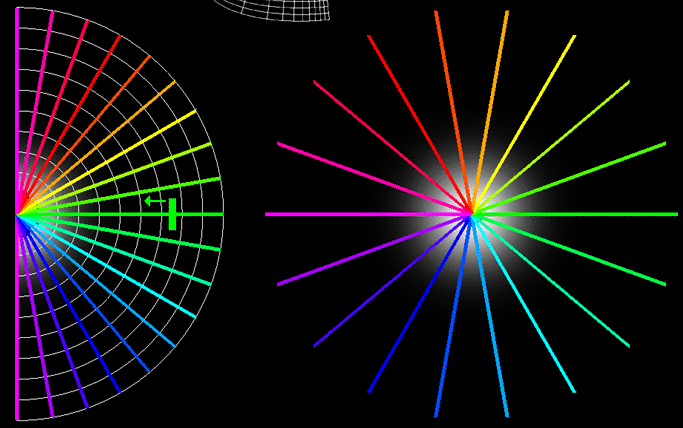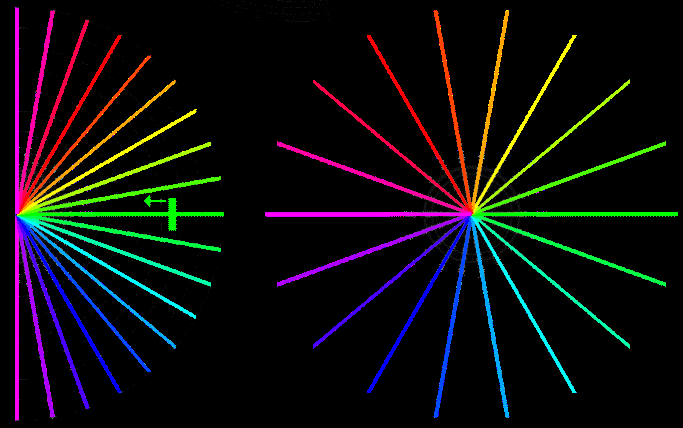Blind Spot Filling In Experiments: Color Spokes
by: Yoonsuck Choe, February 2002
While reading this paper on the web by Paul Bourke, I noticed that
when I put my blind spot on the center of the spokes on the right,
strange filling-in effects happen. For black-and-white spokes, it is known
that even though one do not receive visual information from the blind spot,
a vivid perception of a complete wheel happens (see the
online filling-in experiment page by Karl MacDorman).
Put your blindspot on the center of the spoke on the right wheel,
and observe what you perceive. There are four figures with the following
configuration:
- Figure 1. White background with black blob in the center.
- Figure 2. White background with no blob in the center.
- Figure 3. Black background with white blob in the center.
- Figure 4. Black background with no blob in the center.
Tip:
To make the task of positioning your blindspot
easier, I made animations with small red disks flashing in the center.
Click on the figures to view the animations. In the animated images,
try to move your gaze so that you do not see flashing. That is when
your blind spot is on the center of the spoke.

Figure 1. White background with black blob in the center.
Click on the image to see an animated
version for easier positioning of your blindspot.

Figure 2. White background with no blob in the center.
Click on the image to see an animated
version for easier positioning of your blindspot.

Figure 3. Black background with white blob in the center.
Click on the image to see an animated
version for easier positioning of your blindspot.

Figure 4. Black background with no blob in the center.
Click on the image to see an animated
version for easier positioning of your blindspot.
The figures are originally from
http://astronomy.swin.edu.au/~pbourke/papers/paper19/fig9.html.
GNU GIMP was used to modify the images.
Last Modified:
Thu Feb 28 12:57:59 CST 2002
Nothing beyond this point.



